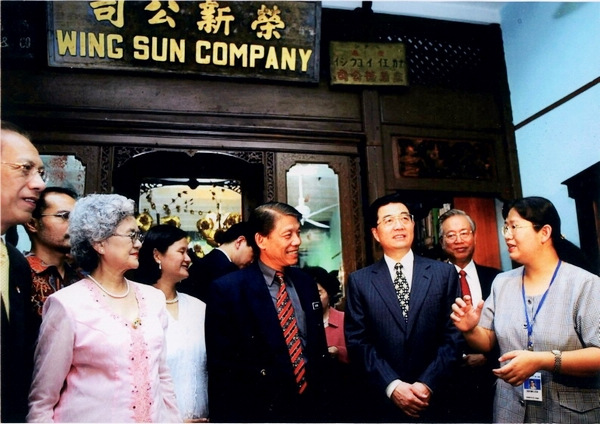Tracking the root of revolution
 0 Comment(s)
0 Comment(s) Print
Print E-mail
China Daily, October 10, 2011
E-mail
China Daily, October 10, 2011
More to learn
In the 19 years since the background of 120 Armenian Street was discovered, Khoo and fellow conservationists like Goh and Lim have given a voice to the Tongmenghui Penang members by telling their stories.
|
President Hu Jintao with members of the Penang Base during his visit to the Malaysian island of Penang in April 2002. |
"Over the years, we have acquired a better understanding of Sun's role in Malaysia. His supporters contributed much to Penang society, setting up civil organizations, schools and a newspaper," Khoo said.
And there are still many stories about Sun and the Penang revolutionary movement to be unearthed. Khoo hopes that other conservationists like Lim will help broaden the research under the auspices of the Penang Heritage Trust and take the base and the Sun-Penang connection further.
"As the custodian of the house, I have to take care of this part of the history. But I feel that since I'm not Chinese educated, I've taken it as far as I can," she said.
As for the base, with the recent completion of restoration works, she hopes it can finally be managed as a successful, self-sustaining private museum.
"I would like to see a museum designer conceptualize the (limited) space and present the history in a more interesting manner," said Lim, who designed the 18-stop Sun Yat-sen Heritage Trail, detailing significant buildings related to Sun and his supporters. The trail is believed to have been possible escape routes when he became a wanted man in Malaya.
"Until recently, a lot of people didn't know about the part Penang played in Sun's life. Chinese history seldom mentions it and if it does, it is often just one line about him conducting a meeting in Malaya," Lim said.
This, however, is no longer the case. Penang has definitely emerged from obscurity to global prominence in the history of modern China.






